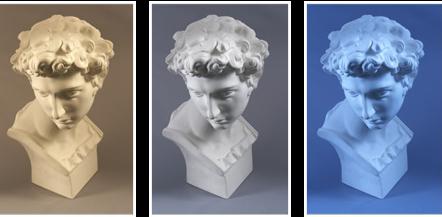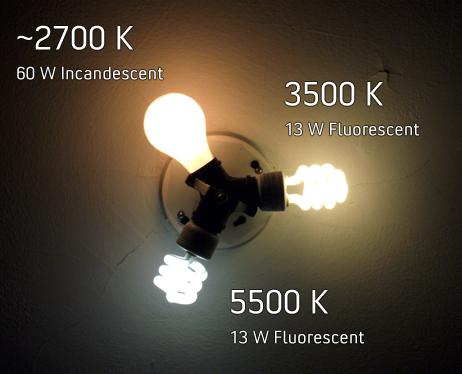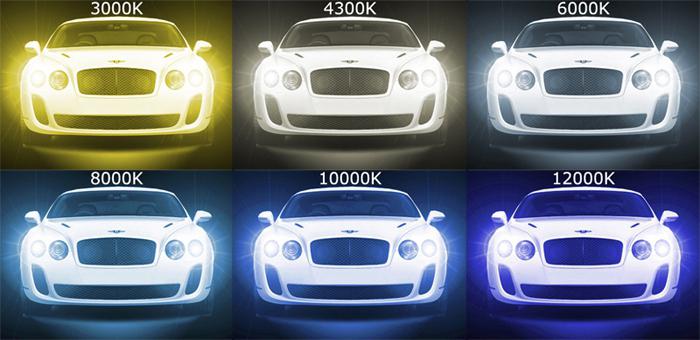Color temperature is one of the most important characteristics of lighting technology, which should be taken into account not only when decorating an interior, but also when choosing lamps for a car. Spectral properties, color rendering index, glow color - these are far from all the properties of a light source, for which the color temperature of light is responsible.
Color temperature in physics
In the works of Max Planck - the founder of quantum physics - more than once
the laws of energy distribution were described. Part of the research of the Nobel Prize laureate concerned the study of absolutely black bodies, which made it possible to single out such a concept as color temperature. The unit of measurement for this value is Kelvin, as in the case of absolute temperature. According to the formula, this indicator is equal to the temperature of the blackbody, at which the body emits radiation in the same color range as the measured one.

The sequence of observations is as follows:
- The lighting is off, the current is supplied to the terminals.
- The resistance is gradually decreasing.
- The blackbody begins to barely noticeably light up in red.
When measuring the temperature of the object at this moment, the indicator is likely to reach 900 ºС. The principle of superconductivity indicates that at zero Kelvin the velocity of atoms is also zero, but the radiation itself depends on it. For convenience, it is better to discard the Celsius scale accepted in our latitudes and use the foreign one.
Color temperature and its tint display
The beginning of the visible spectrum of blackbody radiation is characterized by an indicator of 1200 K. It is this mark that is the border of the red hue. If you continue the filament heating process, you will notice significant color changes. Already at 2000 K, red will be replaced by bright orange, which will gradually turn into yellow, and will be completely replaced by it when it reaches 3000 K. The color temperature of the lamps can correspond to warm or cold colors.

For tungsten spirals, the peak is at 3500K, after which they begin to melt, but light sources based on a different principle of action can easily heat up further.
The color temperature of LED lamps can easily be 5500 K or more. At this rate, you can see the usual bright white color. Upon subsequent heating to 6000 K, the radiation will become somewhat bluish, deepening more and more into this shade, until, when it reaches 18000 K, it comes close to the violet border of the spectrum.
Color temperature and lighting
When designing a lighting system, it is important to take into account many nuances, but it is the color temperature that is responsible for the perception of shades. Cold and warm ranges differ significantly in their performance. So, the temperature of the flame of an ordinary candle is characterized by a mark of 1200 K, and the winter sky is 12000 K.
Table 1. Color temperature and shades
| Shade | Characteristic | |
| 2700 K | Warm white, reddish white | Used in conventional incandescent lamps. Makes the interior more comfortable, truly homely. |
| 3000 K | Warm white, yellow-white | Typical for most halogen lamps, somewhat colder than incandescent light. |
| 3500 K | Plain white | This is the radiation from fluorescent tubes of various sizes. |
| 4000 K | Cold white | It is an indispensable attribute of high-tech style, but its "sterility" evokes thoughts of the operating room. |
| 5000-6000 K | Day | Used to simulate sunlight in greenhouses, terrariums, etc. |
| 6500 K | Cold daytime | Used in professional photography and cinematography. |
The selection of light sources should be carried out depending on the desired effect. The intensity and color temperature of lamps can also be perceived differently depending on the time of day.
LED lighting
Lighting systems are increasingly based on these elements. The color temperature of LEDs includes 3 main shades:
- Warm white (in foreign sources - Warm White (WW)) - up to 3300 K.
- Neutral, aka natural white - Neutral White (NW) - up to 5000 K.
- Cool White - Cool White (CW) - over 5000 K.
Differences between basic white gradations
When choosing a light source, it is very important to predict how the illuminated object will be perceived. This is important not only when choosing lamps for photo shoots, but also when planning a home interior or developing street lighting systems.

The color temperature of the LEDs will help not only determine the contrast and maximum distance, but also give an opportunity to understand how the lamp will behave when the weather conditions change.
Sources of cold white light
Only the sun can boast of ideal accuracy of perception, while other sources of illumination have only more modest indicators. The color temperature of most LED-based factory luminaires is in the 5,000 to 7,000 K range. The average transmission index is around 65 units.
The advantage of cool white sources is contrast, which is ideal for illuminating dark objects. Together with the long distance illumination, the color temperature of LED lamps in the cold range makes the luminaire the most efficient for the road. At the same time, this shade demonstrates the maximum color distortion.
Sources of neutral and warm light
Manufacturers of lighting elements are not limited to cold colors, which are the sharpest and least perceived by the human eye. The color temperature of LED lamps of 2500-6000 K makes it possible to achieve a color rendering index in the range of 75-80 units. Such lamps show excellent results at relatively short distances.
The greatest advantage of lamps in warm and neutral shades is manifested in adverse weather conditions. Rain, fog and smoke, which become a clear barrier to cold lamps, are less significant for warmer lamps. The fact is that such sources illuminate not so much the object itself as the space before it. For the same reason, warm light sources are more effective underwater.
Other light sources
The color temperature of energy-saving lamps used for home lighting often corresponds to the warm spectrum. Cold springs are rather harsh, moreover, they are unlikely to be able to make the home more comfortable. In general, the characteristics of home lamps are determined, rather, by their brightness and service life. Other factors matter when choosing automotive lighting.
Xenon color temperature
Xenon and bi-xenon lamps differ not only in the manufacturer, but also in their characteristics, which largely depend on the color temperature.

Lamp properties:
- Bright yellow color (3000K). Mainly applied in anti-fog
lighting, has a luminous flux of about 3300 lumens. - Yellow-white (4300 K). Typical for factory fog and headlights. High color output (approx. 3400 lumens) and gentle effect on the eyes make them an excellent option for a car. Such xenon is clearly visible on wet asphalt, but at the same time it is not very striking for fellow travelers.
- Plain white (4500-5000 K). Such a color temperature of xenon is considered the best option in terms of perception by the human eye. They have a high color output power (about 3000 lumens), which significantly expands the scope of such lamps.
- Cold white, white-blue (from 6000 K). Depending on the type of optics (lensed or reflex), the tint has a greater or lesser degree of blue. Such lamps are inferior to warmer ones on wet asphalt, but on dry ground or on snow they give excellent visibility.
- Blue, blue-violet (from 8000 K). Such light sources can be classified as decorative. They do not differ in special radiation power (up to 2200 lumens) and are hardly distinguishable on any road surfaces.
According to surveys over the past few years, most motorists preferred xenon lamps with a color temperature of 6000 K. Lanterns should be selected based on personal comfort, it is impossible to name the optimal temperature, because trips to the office and long out-of-town trips dictate completely different requirements.
When color temperature matters
Most of the characteristics of light sources should be considered inseparably from each other. Color temperature is inseparable from brightness, because this is the only way to find the optimal light source for any situation. It is also worth starting from how exactly this or that lamp will be perceived, which is equally important for lighting interiors and exteriors, automotive, street and advertising lighting systems.



